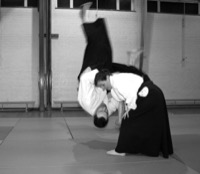Unlocking the key to locking joints
26 Jul 2008I teach a lot of students a lot of locks in my martial arts classes. This involves entangling and applying pressure to the joints of the body in order to cause a level of discomfort (pain) that allows someone to be controlled - be it wrist locks, arm locks, leg locks, shoulder locks, finger locks or head locks.
There are a couple of key points I try and get across to students to really help them apply all of their locks more effectively.
1) Bend it the wrong way
Joints are designed to move in particular directions. Pretty much every joint has a direction in which it is not designed to move and even people with hyper-mobile joints (‘double jointed’) will have a direction of motion which is restricted. It is applying pressure either side of the joint to force it to bend twist or turn in this direction that will produce the best lock.
Keep in mind that the elbow for instance bends one way and whilst it does not bend particularly far in the opposite direction it does not bend at all from side to side (i.e. perpendicular to the direction in which it does bend).
2) Take out the slack
When pressure is applied to lock a joint it should be applied to maximum effect. This cannot be achieved if the starting point has any slack in it as the initial pressure will simply remove the slack.
Slack can almost always be eliminated by a tight entanglement. So
starting tight and then applying pressure will yield the tightest and
strongest joint locks.
Those are today’s top two tips for keeping your locks strong and
efficient - play safe and enjoy.
 Scroll the menu to find all the places to visit
Scroll the menu to find all the places to visit

